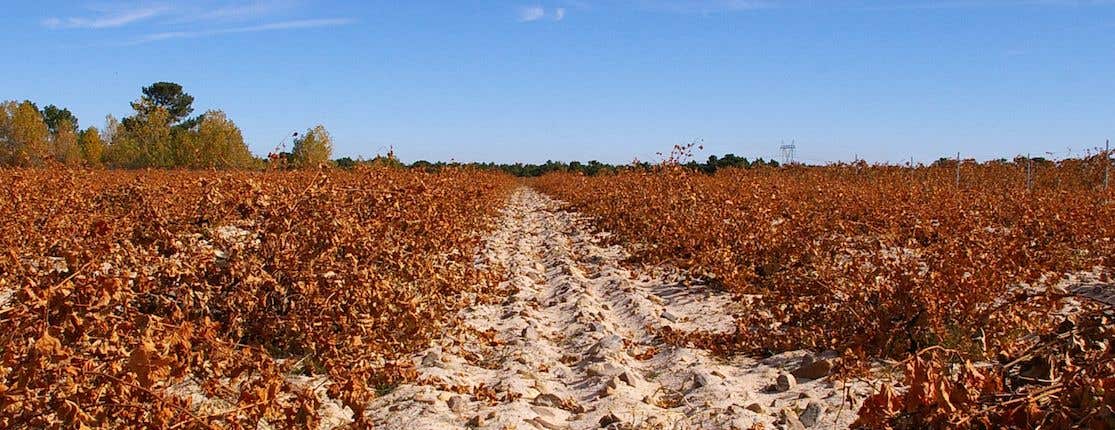Spain

It could be argued that Spain is a viticultural miracle. After years on the sidelines of the world of fine wine, it is now a major player. Investment and ambition in vineyard and winery are resulting in more and more rich – often highly alcoholic – spicy reds that are finding increasing favour among international consumers weaned on ripe New World wines. Proud possessor of more land devoted to vines than any other, Spain is only just beginning to capitalise on this resource in any consistent or cohesive way – which is perhaps not surprising. If it had Germany's love of efficiency, or France's respect for centralism, Spain would have been sending us oceans of judiciously priced wine made expressly for the international market for decades. But Spain is an anarchic jumble of districts and regions, just as its landscape is an anarchic jumble of staggeringly raw scenery and heartbreakingly awful human constructions, and has to be treated as such by the wine enthusiast. There is real treasure to be found by those prepared to dig, however and, now that a connoisseur class has developed in Spain itself, all manner of ambitious investors have been doing their bit to change the image of Spanish wine.
A look at a map suggests just how much climatic diversity there is likely to be between Spain's many wine regions, from the soggy green vineyards of Galicia on the north Atlantic coast to the baked Mediterranean south east. Spain's saving grace, viticulturally, is the average altitude of her vineyards, over 600 m (2,000 ft). A high proportion of Spanish vineyards therefore manage to produce grapes with good levels of colour and acidity simply because night-time temperatures are relatively low, and grapes do not ripen until the end of a usefully prolonged growing season. And because irrigation (officially allowed in Spain since 1996 but on a case by case basis) is expensive and rarely used, vines are typically planted as widely spaced bushes so that yields tend to be very low, ideally resulting in grapes packed full of flavour. Lower altitude vineyards, notably those of the Levante on the southern Mediterranean coast, tend to produce wines whose main problem is an excess of alcohol and a lack of acidity. The traditional Spanish recipe for balancing this was to add white grapes or white wine. Spain's wine surplus makes an ideal potent complement to the vapid sort of red that makes up France's wine lake.
Spain also has its own handsome array of indigenous grape varieties. Tempranillo produces some of the country's most admired red wines and is planted widely under several aliases. Spain's most planted grape variety was exported to France where it is known as Grenache. The Monastrell so common in the Levante is none other than fashionable Mourvèdre. Galicia's Albariño and Rueda's Verdejo are two white grape varieties of undisputable class and interest, Verdejo having been rescued only fairly recently from obscurity. There are many other candidates for such a rescue, with Rioja's Graciano and the Galician Godello being obvious examples.
Spain's main wine problems lie not in the vineyard but in the cellar, or rather the cellars of many of the co-operatives that vinify so much of the country's wine and the blending halls of the big bottlers which have dominated the country's wine trade. Even today it is exceptional for wine producers to grow all their own grapes. Almost all of the top names in the top regions, Rioja and Ribera del Duero for example, depend on local farmers to a greater or lesser degree, though there is a new generation of smaller producers who are set on using only their own fruit.
Another common national characteristic is Spain's traditional fondness for American oak. Ever since the colonisation of the Americas, there has been a lively import trade in American oak, which has been used extensively in Spanish wine cellars for extended maturation of both reds and whites. This often resulted in red wines that were relatively light in colour and marked by a vanillin-sweet overlay, but more recently Spaniards have come to worship deeply coloured, international-style reds drawing more on French oak (and to a certain extent encouraging the use of Cabernet Sauvignon vines imported from France). But in one sense Spain's great gift to the world of wine is not a table wine at all but its incomparable late-fortified wine, a sure-fire appetite-whetter that has been much copied elsewhere, and often traduced even in its homeland Jerez: sherry.
Spaniards are also extremely enthusiastic consumers of sparkling wine, mostly their own answer to champagne, Cava, the best examples of which are made in Penedès in north-east Spain.
Understanding Spanish labels
blanco, white.
bodega, wine cellar or winery.
clarete, uniquely Spanish light red that is somewhere between pink and full tinto, now outlawed by the EU.
Crianza, the most basic level of wine that has been deliberately aged, but possibly only for six months, in small oak barrels. Intermediate quality level between Joven (sin, ie without, crianza) and Reserva.
DO, (Denominación de Origen), Spain's answer to France's AoP/AC. Most of Spain's best wines still qualify for their local DO; Spain is not (quite) as anarchic as Italy.
DOCa (Denominación de Origen Calificada) is a theorectically superior category, currently comprising only Rioja and Priorat. Known as DOQ in Catalan.
DO Pago, recently created category of DO for single estates.
espumoso, sparkling.
For more information on this region see Wines from Spain.